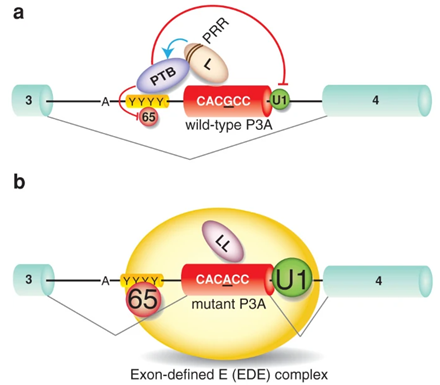- Home
-
Screening
- Ionic Screening Service
-
Ionic Screening Panel
- Ligand Gated Ion Channels
- Glycine Receptors
- 5-HT Receptors3
- Nicotinic Acetylcholine Receptors
- Ionotropic Glutamate-gated Receptors
- GABAa Receptors
- Cystic Fibrosis Transmembrane Conductance Regulators (CFTR)
- ATP gated P2X Channels
- Voltage-Gated Ion Channels
- Calcium Channels
- Chloride Channels
- Potassium Channels
- Sodium Channels
- ASICs
- TRP Channels
- Other Ion Channels
- Stable Cell Lines
- Cardiology
- Neurology
- Ophthalmology
-
Platform
-
Experiment Systems
- Xenopus Oocyte Screening Model
- Acute Isolated Cardiomyocytes
- Acute Dissociated Neurons
- Primary Cultured Neurons
- Cultured Neuronal Cell Lines
- iPSC-derived Cardiomyocytes/Neurons
- Acute/Cultured Organotypic Brain Slices
- Oxygen Glucose Deprivation Model
- 3D Cell Culture
- iPSC-derived Neurons
- Isolation and culture of neural stem/progenitor cells
- Animal Models
- Techinques
- Resource
- Equipment
-
Experiment Systems
- Order
- Careers
- Home
- Symbol Search
| Catalog | Product Name | Gene Name | Species | Morphology | Price |
|---|---|---|---|---|---|
| ACC-RI0017 | Human CHRNA1 Stable Cell Line-HEK293 | CHRNA1 | Human | Epithelial | INQUIRY |
Neuronal acetylcholine receptor subunit α-1, also known as nAChRα1, is a protein that is encoded by the CHRNA1 gene in humans. The protein encoded by this gene is a subunit of certain nicotinic acetylcholine receptors (nAchR). Muscle acetylcholine receptors are composed of 5 subunits of 4 different types: 2 α isoforms and 1 β, γ and δ subunits. The CHRNA1 gene encodes an alpha subunit that plays a role in acetylcholine binding/channel gating. Transcriptional variants that encode splicing of different isoforms have been identified.

Figure 1. Early spliceosome complex formation on CHRNA1 pre-mRNA with alternative exon P3A are schematically shown. (Rahman MA, et al.; 2013)
The study found that CHRNA1 is located on chromosome 2q31.1 and belongs to the Cholinergic receptors nicotinic subunits family. Further studies have shown that subtype 1 of this gene is only expressed in skeletal muscle; subtype 2 is constitutively expressed in skeletal muscle, brain, heart, kidney, liver, lung and thymus. The protein encoded by this gene is located on the plasma membrane. After binding to acetylcholine, AChR responds through extensive changes in conformation, which affects all subunits and causes ion conduction channels across the plasma membrane to open.
CHRNA1 and Disease
Clinical studies have found that CHRNA1 mutations can affect the function of the constituent nAchR and cause ion channel disorders. Diseases caused by CHRNA1 mutations mainly include: multiple pterygium syndrome and congenital myasthenic syndrome.
Multiple Pterygium Syndrome
Multiple pterygoid syndrome is a symptom that is obvious before birth, that is, skin webbing at the joints (pterygium) and insufficient muscle movement (dyskinesia) before birth. Movement disorders often cause muscle weakness and joint deformities called contractures, which restrict joint movement (joint metamorphosis). As a result, multiple pterygoid syndrome can cause other problems with exercise, such as inability to fully extend the arms and legs.
The AChR protein exists in the skeletal muscle cell membrane and is essential for signal transduction between nerve and muscle cells. The signal between these units is necessary for movement. The AChR protein is composed of five subunits. The γ subunit is only found in the fetal AChR protein. Around the 33rd week of pregnancy, the gamma subunit is replaced by another subunit to form the adult AChR protein. Adult AChR instead of fetal AChR is the reason why most patients with multiple pterygoid syndrome with pterygoid type meat have no problems with muscle movement after birth.
Mutations in the CHRNA1 gene can cause damage or deletion of the α subunit. This in turn affects the function of the AChR channel protein, resulting in damage to the communication between the nerve cells and muscle cells of the developing fetus. The lack of signal conduction between nerve and muscle cells can cause dyskinesia and pterygium before birth, and may cause many other signs and symptoms of multiple pterygoid syndrome.
Congenital Myasthenic Syndrome
Congenital myasthenia syndrome is a group of diseases characterized by muscle weakness, which worsens with physical exertion. Muscle weakness usually starts in early childhood, but it can also appear in adolescence or adulthood. Among them, facial muscles, including the muscles that control the eyelids, the muscles that make the eyes move, and the muscles used for chewing and swallowing, are the most common. However, in this case, any muscles used for exercise (skeletal muscles) will be affected. Due to muscle weakness, the affected infant may have difficulty feeding. The development of motor skills such as crawling or walking may be delayed. The severity of myasthenia gravis varies greatly. Some people have mild weakness, while others are so weak that they cannot walk.
Many gene mutations can cause congenital myasthenia syndrome. The CHRNA1 gene is a protein involved in the normal function of neuromuscular junctions and provides guidance. The neuromuscular junction is the area between the ends of nerve cells and muscle cells where signals are relayed to trigger muscle movement.Mutations in the CHRNA1 gene lead to changes in proteins, which affect the function of neuromuscular junctions and disrupt the signal transduction between nerve cells and muscle cell ends. The interruption of signal conduction between these cells can lead to impaired skeletal muscle motor ability, muscle weakness and delayed motor skills development.
References
- Vogt J, et al.; Mutation analysis of CHRNA1, CHRNB1, CHRND, and RAPSN genes in multiple pterygium syndrome/fetal akinesia patients. Am J Hum Genet. 2008, 82(1):222-7.
- Barišić N, et.al.; Genetic heterogeneity and pathophysiological mechanisms in congenital myasthenic syndromes. Eur J Paediatr Neurol. 2011, 15(3):189-96.
- Engel AG. Genetic basis and phenotypic features of congenital myasthenic syndromes. Handb Clin Neurol. 2018, 148:565-589.
- Chen CP. Prenatal diagnosis and genetic analysis of fetal akinesia deformation sequence and multiple pterygium syndrome associated with neuromuscular junction disorders: a review. Taiwan J Obstet Gynecol. 2012, 51(1):12-7.
- Rahman MA, et al.; HnRNP L and hnRNP LL antagonistically modulate PTB-mediated splicing suppression of CHRNA1 pre-mRNA. Sci Rep. 2013, 3:2931.
Inquiry
